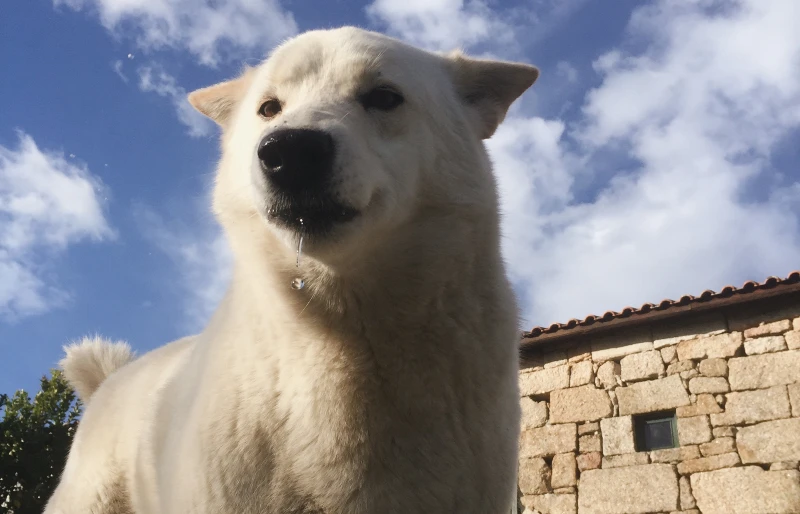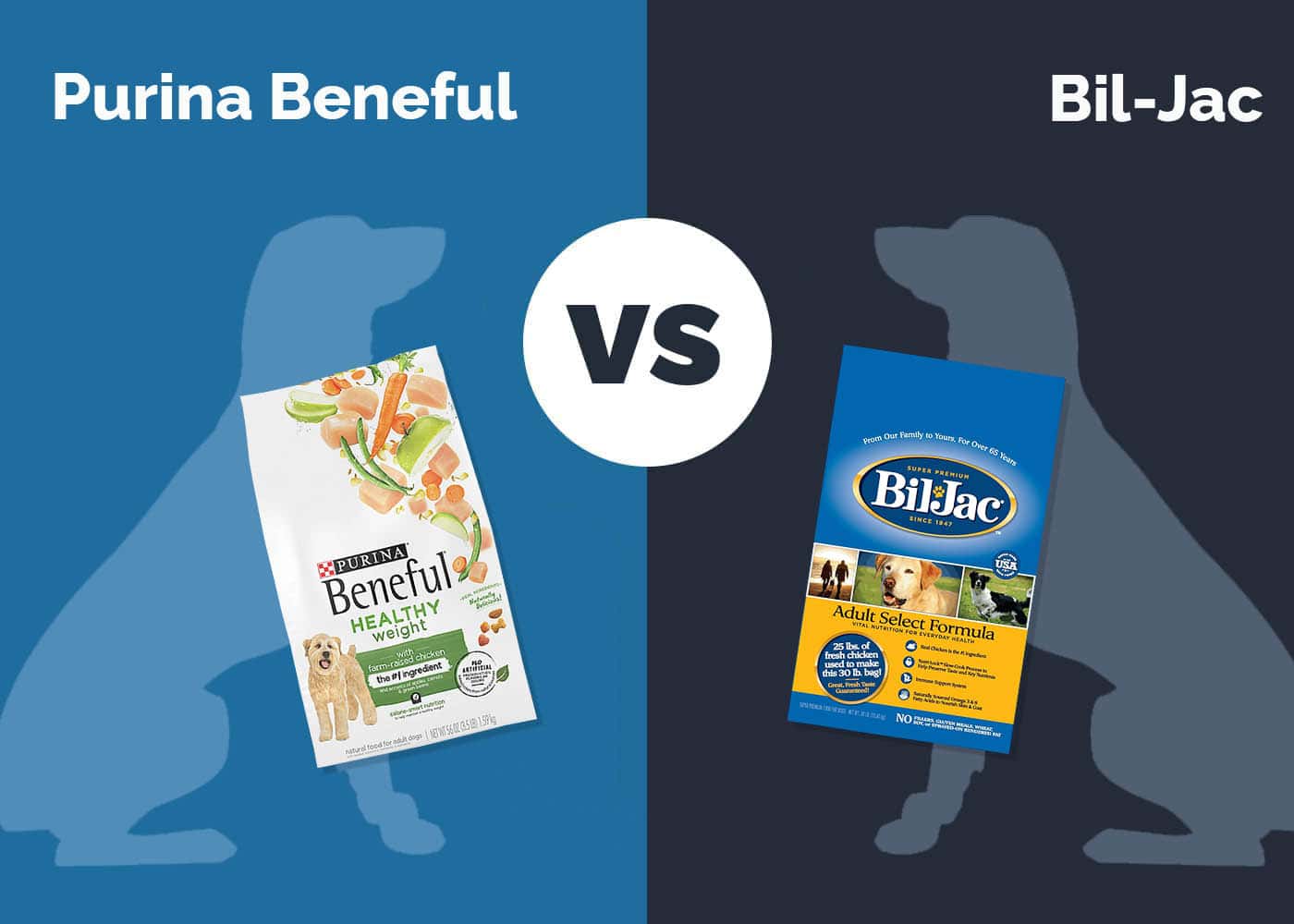Great Pyrenees vs Samoyed: Differences Explained (With Pictures)
Updated on
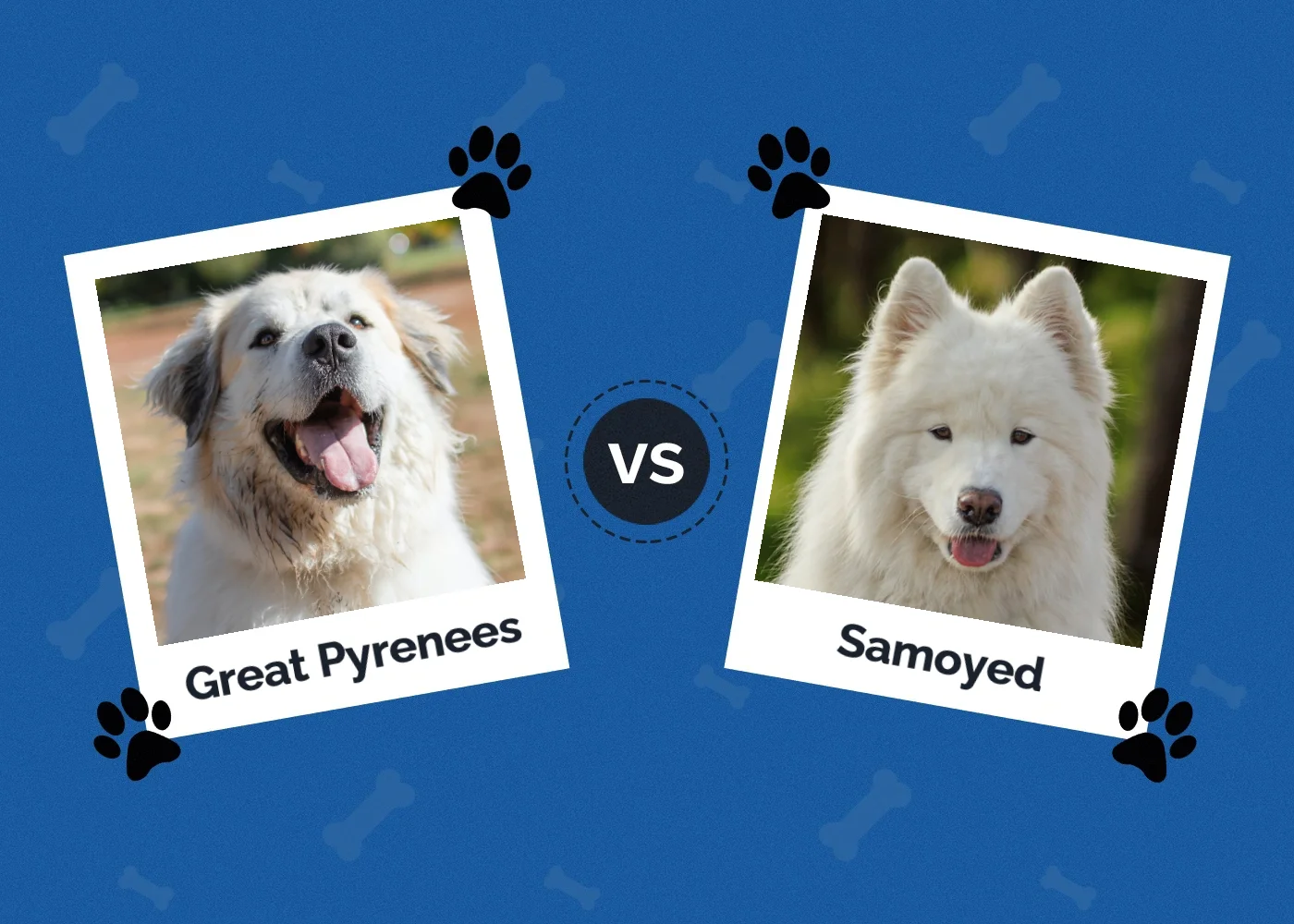
Click to Skip Ahead
At first glance, the Great Pyrenees and Samoyed don’t really resemble each other too closely, other than in color. One is decidedly bigger than the other, and neither their tails nor ears are all that alike.
Regardless, if you love these breeds and want to learn more about them or are trying to decide between them, read on as we highlight what makes these breeds similar and what sets them apart.
Visual Differences

At a Glance
- Average height (adult): 25–32 inches
- Average weight (adult): 85–100+ pounds
- Lifespan: 10–12 years
- Exercise: 60 minutes a day
- Grooming needs: Moderate
- Family-friendly: Yes
- Other pet-friendly: Often
- Trainability: Intelligent, independent, easily bored
- Average height (adult): 19–23.5 inches
- Average weight (adult): 35–65 pounds
- Lifespan: 12–14 years
- Exercise: 90–120 minutes a day
- Grooming needs: Moderate
- Family-friendly: Yes
- Other pet-friendly: With training
- Trainability: Smart, independent, eager to please
Great Pyrenees Overview
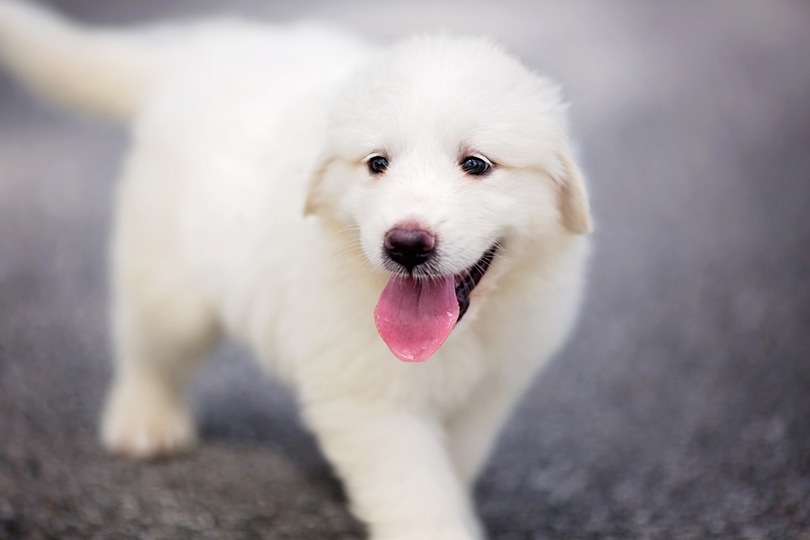
The Great Pyrenees (nicknamed Pyr) hails from the Pyrenees Mountains, which are part of the border between Spain and France. Experts believe that the Pyr’s ancestors were likely located in Asia Minor as long as 11,000 years ago!
They were bred to guard sheep against rustlers and predators like bears and wolves. Everything about this breed’s origins speaks to their current temperament and other characteristics. They have thick shaggy coats for the cold mountains, their size helps with guarding and protecting against intimidating predators like bears, their protectiveness enables them to function as guardians for their vulnerable flocks, and their calm and patience help them sit every day watching over their flocks.
Personality / Character
The Pyrenees is known for their calm and gentle nature. They are one of the best canine guardians out there, and their very size is often enough to deter anyone who is unwelcome. The Pyr is confident and fearless, but with their family, they are affectionate and patient.
Pyrs get along well with other pets, which include cats and other dogs, and are wonderful companions for the entire family. This means they are kid-friendly, but be careful if you have very young children; since these dogs are so large, they can accidentally knock little ones down. Due to their protective nature, they are also wary of strangers.
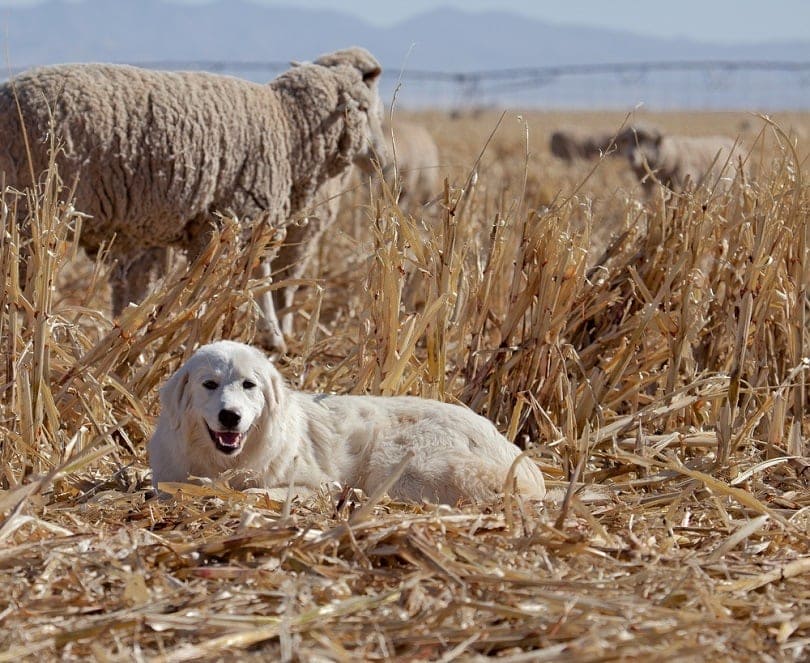
Training
Training the Great Pyrenees can be challenging. They are smart enough to learn and respond, but due to all that alone time sitting on a mountain, they can also be independent-minded. This can mean they won’t be interested in learning tricks and obedience. Pyrs are known to respond to a command slowly just because it doesn’t strike them as all that important. This breed can definitely benefit from obedience classes.
Socialization is essential, particularly if you own any other pets. The Pyr is not aggressive whatsoever, but they might be prone to chasing a cat.
Exercise
Pyrs are not that active. They were bred to stand guard and occasionally patrol the territory, so they don’t need much exercise. A few nice leisurely walks that add up to about 1 hour every day should be sufficient.
You’ll also want to add in playtime, though they are plenty happy to just patrol their territory on a daily basis.
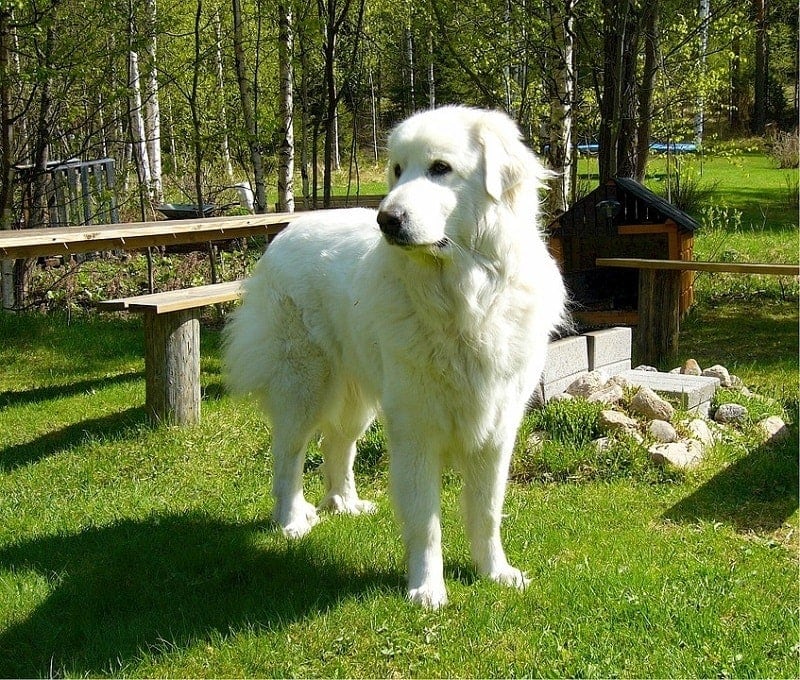
Health & Care
Part of taking care of the Pyrenees entails staying on top of their grooming. They have a heavy double coat, with a soft undercoat and a longer outer coat. This means a fair bit of weekly brushing, which will turn into a daily affair every spring and fall.
Also, given the size of this dog, you’ll be buying a large amount of dog food! You’ll need to get high-quality food that is formulated for giant breeds and your dog’s current age.
The Pyr is a generally healthy dog, but like all purebreds, there are several health conditions that they are prone to:
- Hip dysplasia
- Elbow dysplasia
- Eye problems
- Bloat
Suitable For:
The Great Pyrenees might be a bit of a challenge for a beginner because of their size and independence, which can make training more difficult. But they will make fantastic companions for single people or families, preferably in a house with a big yard.
If you’re looking for a guardian for protection, you definitely will not go wrong with the Pyr. They will stay by your side and scare off just about anyone.
This breed will also work for people who enjoy going for walks but don’t want a high-energy dog. That said, these are gorgeous, giant-sized, fluffy white dogs that will catch everyone’s attention!
Samoyed Overview
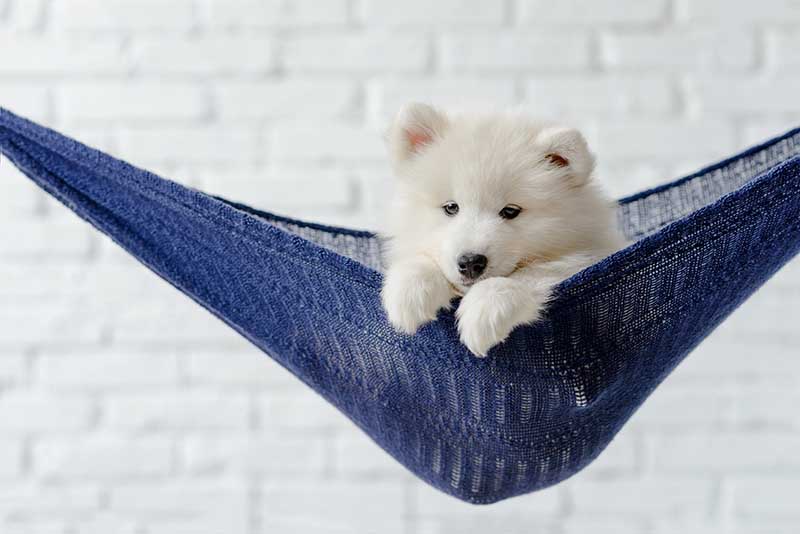
The Samoyed (nicknamed Sammy) hails from a cold region, specifically Siberia. They are a spitz breed and have been around for at least 1,000 years. They were bred to be sled dogs and companions that would help keep their families warm with their dense, fluffy coats. The Sammy was also used as watchdogs and hunting dogs. They eventually started herding and protecting reindeer.
The Sammy is medium-sized and known for their thick white coats, though they can also be cream and pale tan. They are also famous for their smile, which has a specific purpose other than making them look perpetually happy! The upturned corners on their mouth means they drool less, which reduces the likelihood of icicles forming on their face.
Personality / Character
Due to their background of living with nomadic people in frigid temperatures, Sammies forge strong bonds with their families. Samoyeds are affectionate and love being with their people, which can mean separation anxiety issues if they are left alone too often and for too long.
They are gentle and sweet dogs but are also energetic and playful. They are great with kids and love almost everyone they meet.
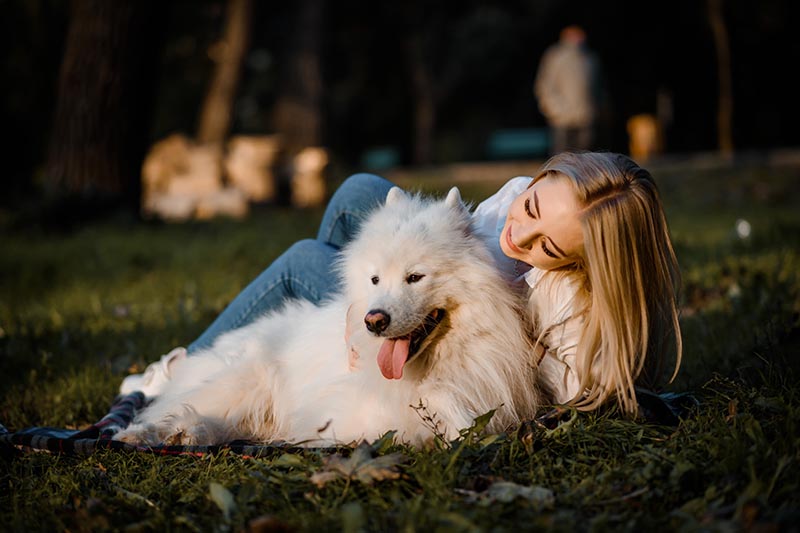
Training
The Samoyed is easier to train than the Pyr, but there are still challenges. Sammies are devoted and eager to please and can take to training well, but they also have a mischievous streak, so you’ll need to ensure that training sessions are kept short and interesting and use positive reinforcement training methods.
Socialization is essential for this breed, particularly if you have other, smaller pets. Sammies can become best friends with cats but only with the right socialization. Otherwise, Sammies tend to chase smaller animals.
Exercise
Samoyeds are energetic dogs and require more exercise than the Pyr. You’ll want to aim for 1.5 to 2 hours of walking every day. They will also need plenty of playtime and the chance to run. They make great companions for hiking.
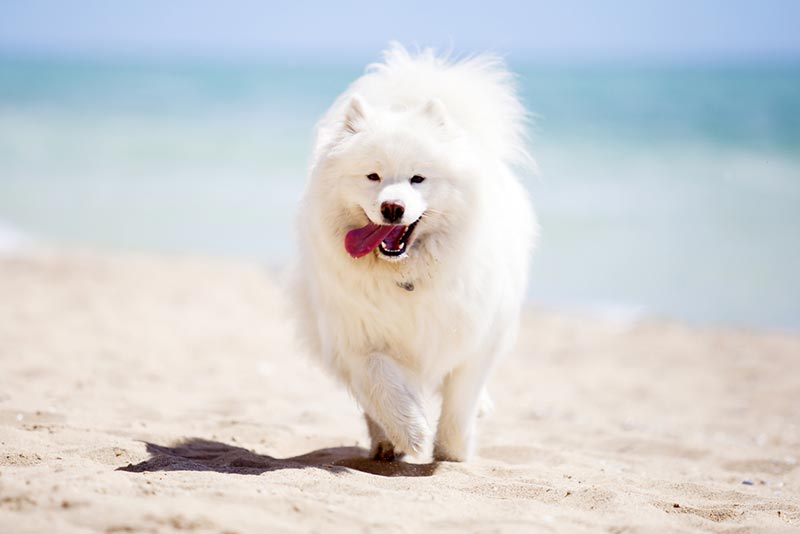
Health & Care
Sammies need about the same amount of grooming as the Pyr because both breeds have thick double coats with longer outercoats. But there’s slightly less dog to brush with the Sammy. They should be brushed at least once a week normally and daily in the spring and fall.
You’ll want to opt for high-quality dog food geared for your Samoyed’s current age and weight, and it should definitely be for high-energy dogs!
The following are inherited health conditions that the Samoyed could have:
- Hip dysplasia
- Elbow dysplasia
- Uveodermatologic syndrome
- Eye problems
- Hereditary glomerulopathy
- Aortic stenosis
Suitable For:
The Sammy is great for single people or families with children of all ages. They are super playful and loving and adore being around people, so ideally, they need someone who is home most of the time.
If you’re active and love doing things outside, the Samoyed can be an excellent fit! These dogs are strong, sturdy, and super energetic, so you should expect to be doing something with this breed most of the time.
They have too much energy for apartment living, unless you live close to great parks and walking trails, particularly for off-leash time. Otherwise, a house with a yard is best.
Which Breed Is Right for You?
If you’re looking for a large dog to act as a guardian, protector, and affectionate lovebug, the Great Pyrenees will fit the bill. Grooming either the Pyr or Sammy will take up time, but due to their size, the Pyr will likely take longer than the Sammy.
You should also be prepared for a larger dog food bill with the Pyr. Both dogs tend to experience separation anxiety if you’re not home much, but the Sammy is more inclined to it. If you like to go out running, the Samoyed is a better choice, and if you prefer a leisurely stroll, the Pyr is ideal.
Finally, neither dog is considered a good first dog for a novice dog owner. However, if you do your research and talk to experienced dog owners, particularly of the breed that you’re most interested in, either the Samoyed or Great Pyrenees would be a fantastic dog!
Featured Image Credit: Left – Ryan Leeper, Pexels | Right – Barcs Tamás, Unsplash




